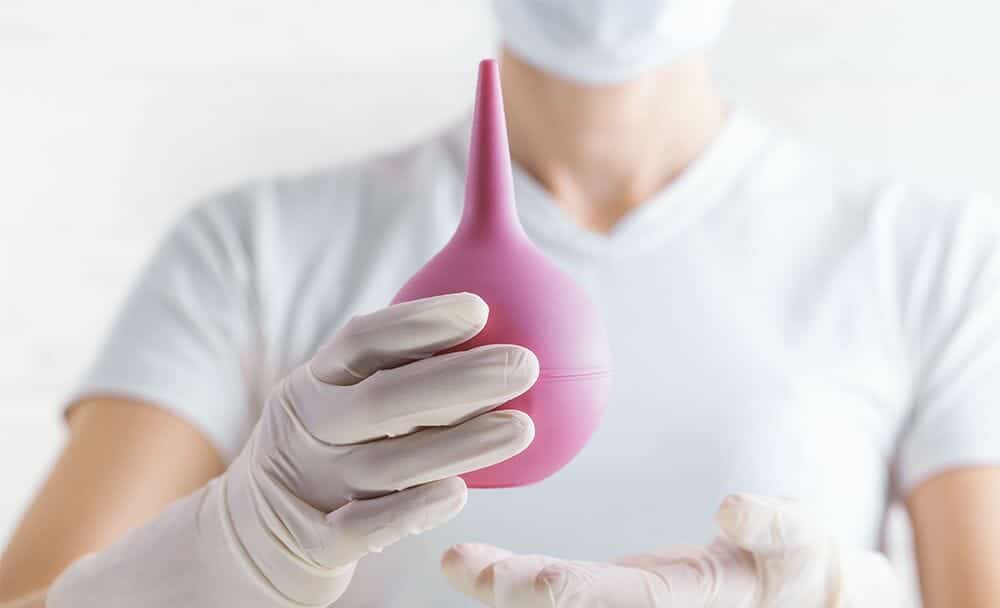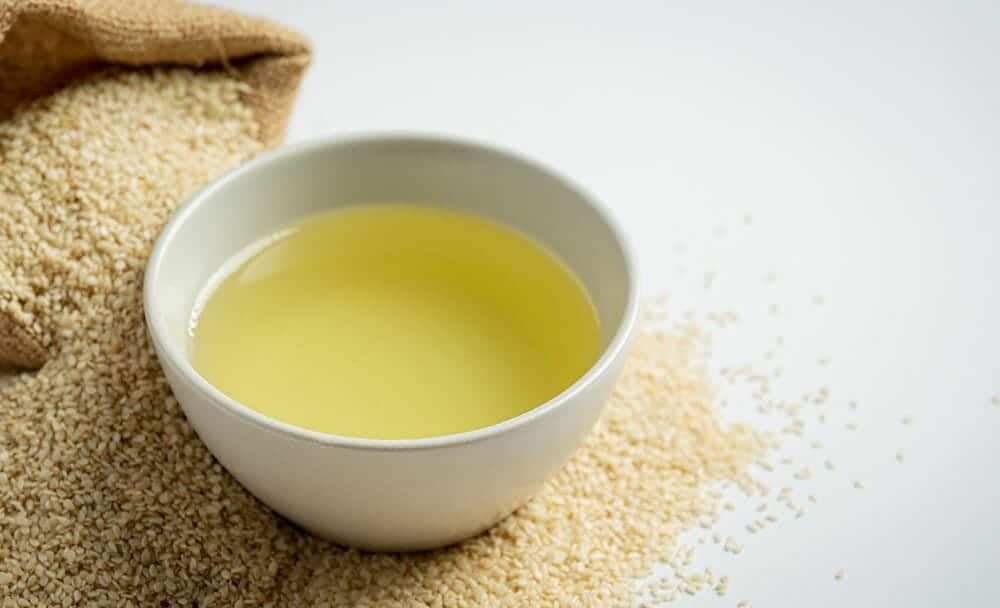
Enema, known as “Basti” in Ayurveda, is a therapeutic procedure that has been used for centuries to promote detoxification, improve digestion, and treat various health conditions. Ayurvedic enemas involve the introduction of herbal decoctions, oils, or other medicated substances into the rectum and colon. In this article, we will explore the different types of enemas and their specific applications.
1. Niruha or Asthapan Basti (Decoction Enema)
Niruha Basti or Asthapan Basti is the most common type of enema used in Ayurveda. It involves the administration of a herbal decoction into the colon. The decoction is prepared by boiling medicinal herbs, such as Dashamoola (a combination of ten roots), Triphala (a combination of three fruits), or Guduchi (Tinospora cordifolia), in water. Niruha Basti is primarily used to balance Vata dosha, alleviate constipation, improve digestion, and detoxify the body. [1] [2] [3] [4]
The herbal decoction used in Niruha Basti has specific properties that help to pacify Vata dosha and promote the elimination of toxins from the colon. This type of enema is often recommended for individuals with Vata-related disorders, such as joint pain, gas, bloating, or dryness. [1] [2] [3] [4]
2. Sneha or Anuvasana Basti (Oil Enema)

Sneha or Anuvasana Basti involves the administration of medicated oils into the rectum and colon. This type of enema is used to balance Vata dosha, nourish the body, lubricate the intestines, and promote healthy bowel movements. The oils used in Sneha Basti are carefully selected based on the individual’s constitution and specific health condition. [5] [6] [7]
Commonly used oils in Sneha Basti include sesame oil, castor oil, or medicated oils infused with herbs such as Ashwagandha (Withania somnifera) or Bala (Sida cordifolia). Sneha Basti is beneficial for individuals with Vata-related imbalances, including constipation, dryness, or nervous system disorders. [8] [9] [10]
3. Matra Basti (Small Volume Enema)
Matra Basti is another form of Sneha Basti enema that involves the administration of a minimal amount of medicated oil into the rectum. This type of enema is used for rejuvenation, nourishment, and balancing Vata dosha. Matra Basti is usually performed daily for a specific duration as part of a comprehensive Ayurvedic treatment plan. [11]
The small volume of medicated oil used in Matra Basti is easily absorbed by the colon, providing nourishment and promoting the elimination of toxins. It is often recommended for individuals with weak digestion, fatigue, or Vata-related disorders. [11]
4. Ksheera Basti (Milk Enema)

Ksheera Basti involves the administration of warm medicated milk into the rectum. This type of enema is used to nourish the body, improve digestion, strengthen the tissues, and promote overall well-being. The milk used in Ksheera Basti is typically infused with herbs such as Shatavari (Asparagus racemosus), Vidari (Pueraria tuberosa) and Yashtimadhu(Liquorice) to enhance its therapeutic properties. [12] [13]
Ksheera Basti is beneficial for individuals with Pitta-related imbalances, including hyperacidity, ulcers, or inflammatory conditions. It helps to soothe and cool the digestive system, reduce inflammation, and promote healing. [14]
FAQs
How often should I administer a cleansing enema?
The frequency of cleansing enemas depends on individual needs and the advice of a healthcare professional. It is generally recommended to avoid excessive use of enemas, as it may disrupt the natural bowel function. Consulting with a healthcare provider will help determine the appropriate frequency for your specific situation.
Are Ayurvedic enemas safe for everyone?
Ayurvedic enemas, like any other treatment, should be approached with caution. It is important to consult with a qualified Ayurvedic practitioner before undergoing any enema treatment, especially if you have any underlying health conditions or are pregnant. They will assess your individual constitution and recommend the most suitable type of enema for you.
Are there any potential side effects of enemas?
While enemas are generally safe when performed correctly, there are some potential side effects to be aware of. These can include discomfort or pain during the procedure, bowel irritation, electrolyte imbalances, or allergic reactions to the substances used. It is important to follow proper instructions, use sterile equipment, and consult a healthcare professional if you experience any adverse effects.
Is it necessary to fast before performing an enema?
In general, it is not necessary to fast before performing an enema. However, if you are undergoing a specific medical procedure or following specific instructions provided by your healthcare professional, they may recommend fasting or following certain dietary restrictions before the enema. It is best to consult with your healthcare provider for any specific guidelines related to fasting or dietary requirements.
Conclusion:
Ayurvedic enemas, or Basti, offer a unique approach to promoting detoxification, improving digestion, and treating various health conditions. However, before undergoing any enema treatment, it is essential to consult with a qualified Ayurvedic practitioner who can determine the most suitable type of enema for your specific needs.
Disclaimer: The information provided in this blog is for educational purposes only and should not be considered medical advice. Please consult with a qualified healthcare professional before undergoing any enema treatment or making changes to your health routine.
References:
- View of A critical review on concept of Niruha Basti formulation (jaims.in)
- A comparative clinical study to evaluate the efficacy of Dashamoola Niruha Basti with Rasna-Erandadi Niruha Basti in the management of Gridhrasi vis~a~vis sciatica | Journal of Ayurveda and Integrated Medical Sciences (jaims.in)
- A Critical review on Pharmacodynamics of Basti Chikitsa and its action on Enteric Nervous System (nctayurvedacollege.in)
- International Journal of Ayurveda and Pharma Research Case Study – An Ayurvedic Intervention In Amavata A Case Report(researchgate.net)
- View of Basti – A critical review on the basis of historical aspect (jaims.in)
- Understanding Of Anuvasana Basti (Medicated Oil Enema): Compilation From Brihattaryi (researchgwjpps | ABSTRACTate.net)
- Effect Of Anuvasana Basti And Yoni Pichu In Sukh Prasava & Reducing Postpartum Complications (iamj.in)
- Comparative study of Anuvasana Basti with constant and escalating dose as an alternative to Snehapana in Purvakarma of Vamana and Virechana (researchgate.net)
- Presence Of Ashwagandha (Withania Somnifera Dunal) Among Various Formulations And Dosage Forms For Various Therapeutic Administrations: An Ayurvedic Benchmark For Drug Designing And Modelling (wjpr.net)
- Kalpajyoti Bora & Dipak Kumar Goswami: Anuvasana Basti in Normal Vaginal Delivery: A Case Report (iamj.in)
- Matra Basti-Mode of Action-A Conceptual Study (researchgate.net)
- Role of Shatavaryadi Ksheerapaka Basti in Garbha Kshaya – Case Series | Journal of Ayurveda and Integrated Medical Sciences (jaims.in)
- Susheela choudhary et al: Efficacy Of Ksheerabasti In The Management Of Garbhakshaya W.S.R. To Intrauterine Growth Retartdation – A Case Report (iamj.in)
- Concept Of Ksheera Basti – A Review Article(wjpps.com)













